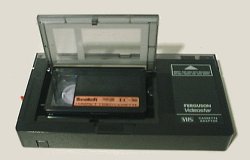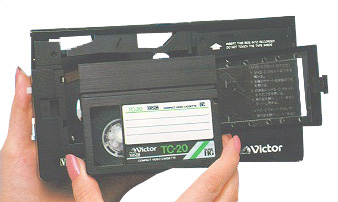

A VHS-C cassette in its adaptor shell. When the lid is
closed, motorized guide pins pull the tape out and across the front of the
adaptor, and the shell's right-hand spool is linked by toothed wheel to
the compact tape's spool. The combined tape then behaves just like a
normal VHS cassette.
